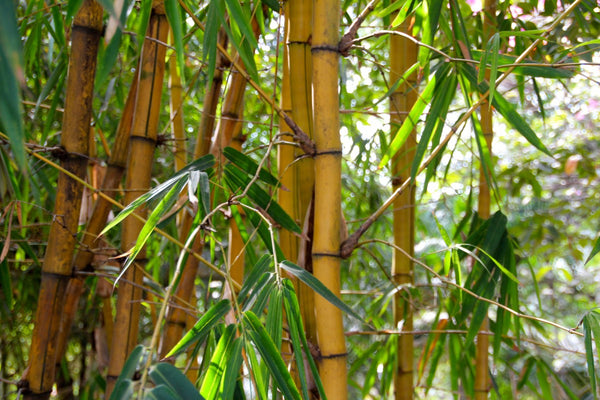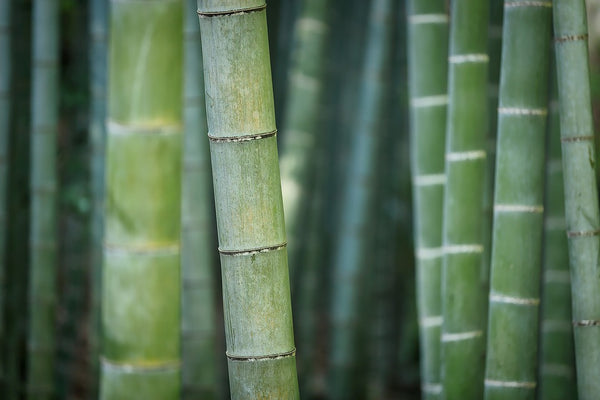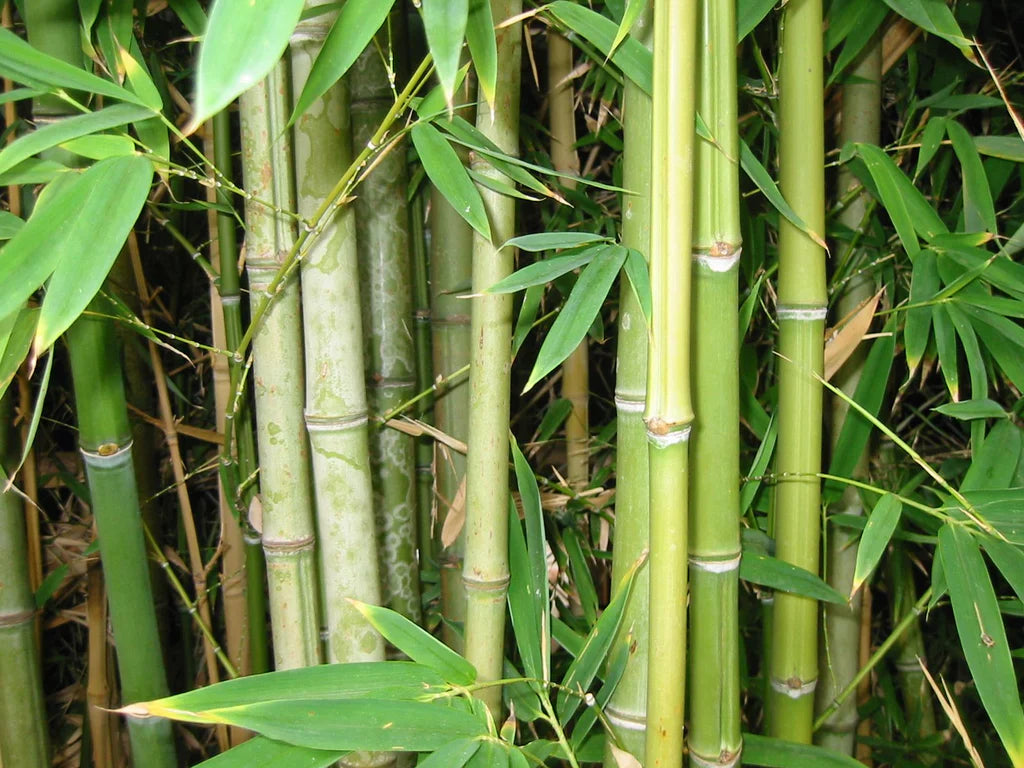Most people already know that bamboo is a beautiful, exotic plant that comes in a variety of colors to brighten up the landscape. But let's dig a little deeper and explore its planting benefits and care instructions, as well as how to stop the spread of it.
Is Bamboo Invasive?
Bamboo is associated with being an invasive plant that can quickly take over an area. But not all types of bamboo are invasive. It’s actually extremely easy to care for and grows very well in containers as the perfect house plant.
What is Bamboo?
Bamboo is a fast-growing type of woody grass that's often mistaken for a tree. It's the largest member of the grass family and has hollow shoots that grow straight upwards and produce leaves. It’s considered to be one of the fastest growing plants in the world with some species of bamboo growing at a rate of 36 inches a day. Bamboo is often the go-to plant for something that is low-maintenance and fuss-free. It's perfect for beginners - indoors or outdoors. Plus, bamboo stalks also act as great accent piece to add an explosion of color to any landscape.

Why Should You Plant Bamboo?
Different Types of Bamboo
There are over 1,000 different types. Bamboo comes in a variety of different colors, with stalks ranging from blacks and goldens to light and dark greens.
A few varieties, like Muliplex Bamboo, have a growth rate of 10 or more feet per year and with the ability to spring up as a privacy fence in the blink of an eye.
Privacy Fence
If planted in rows, bamboo makes for an attractive privacy hedge that can easily be kept at a certain height. You don’t have to worry about hurting your bamboo if you prune it to keep it at your desired height because it’s quick to regenerate.
Eco-Friendly
Bamboo can also benefit the ecosystem. When planted in groups, bamboo prevents soil erosion on slopes and hills. The plant’s regenerative properties make it an eco-friendly resource for paper, food, furniture, homes and more.
Indoor and Outdoor Plants
If you have limited space or have the desire to bring bamboo inside your home, don’t hesitate! Simply place it in a container. Potted bamboo looks excellent on porches, patios and as indoor decor. Not only will bamboo in containers flourish in low-light conditions inside, but it'll also bring fresh air, peace, and luck.

How to Stop the Spread of Invasive Bamboo
Clumping vs. Running Bamboo
Running plants are the varieties that spread out over large areas. They have roots called rhizomes that spread out horizontally from the root system and produce new shoots. The rhizomes stay close to the surface and can be found about 10 to 12 inches below the soil line.
One way to stop running bamboo is to get a clumping variety. Clumping bamboo doesn’t send out rhizome roots. Instead of spreading out over several feet, they get a few inches wider. Clumping varieties tend to have a faster growing rate because they grow taller instead of spreading outwards.
There's a number of solutions when it comes to easily maintaining running varieties.
How to Control Running Bamboo
- You can plant running bamboo in a container to keep inside or out. To make a bamboo privacy fence, plant it in a long container or multiple containers side by side. It will still fill in to form a solid living wall.
- You can maintain it in the ground by mowing around the edges of its planting location. It won't harm the plant or the mower to ride over new shoots.
- Another option would be to dig a trench around your plant that's about 10 to 12 inches deep. The plant’s roots that spread stay close to the surface, and you’ll be able to see them poking through the sides of the trench. When you see them, cut them with a pair of hand pruners, loppers, or a sharp shovel.
- Another common solution would be to plant your bamboo in a raised planting bed that’s surrounded by walls or cement.
Bamboo Plant Care
Outdoor Bamboo Plants
To grow bamboo outdoors, plant in an area that receives full to partial sunlight. Bamboo will grow in a variety of different lighting conditions, but it grows the fastest in full sun. Keep in mind that young plants may need protection from the harsh summer heat if planted during the summer months.
Your plant will adapt to your natural soil, even if it’s sandy or heavy in clay, as long as it drains well. Make sure that your plant gets about an inch of water per week, either from rainfall or by hand. By adding a 3-inch layer of mulch around your plant, you’ll help the soil retain moisture and nutrients. And every year in early spring, give your plant a little well-balanced, organic fertilizer.
Potted Bamboo Plants
If you plan to keep your bamboo in a container, make sure it has drainage holes at the bottom. Water your potted plant until you see liquid draining from the bottom of the pot. Remember that potted plants will need water more often than those planted in the ground.
Bring your container plant indoors once the cold weather comes, or insulate the pots with mulch and wrap the container in an insulating material (like burlap).
For more bamboo inspiration, check out our collection of bamboo!
FAQs
Should I plant bamboo for privacy?
Bamboo creates excellent privacy for your landscape. Planted in rows, it makes a dense hedge that can keep out unwanted noise or unsightly views, giving you the lush privacy you’re looking for.
What is a clumping bamboo?
Clumping bamboo has a shorter root structure and doesn’t send out rhizome roots like running bamboo does. Clumping varieties grow outward from a central plant and tend to have a faster growth rate because they grow taller instead of spreading widely.
What are the advantages of clumping bamboos?
Clumping bamboos are non-invasive and usually easier to control. They won’t spread out as widely as running varieties, which is preferred by many people.

